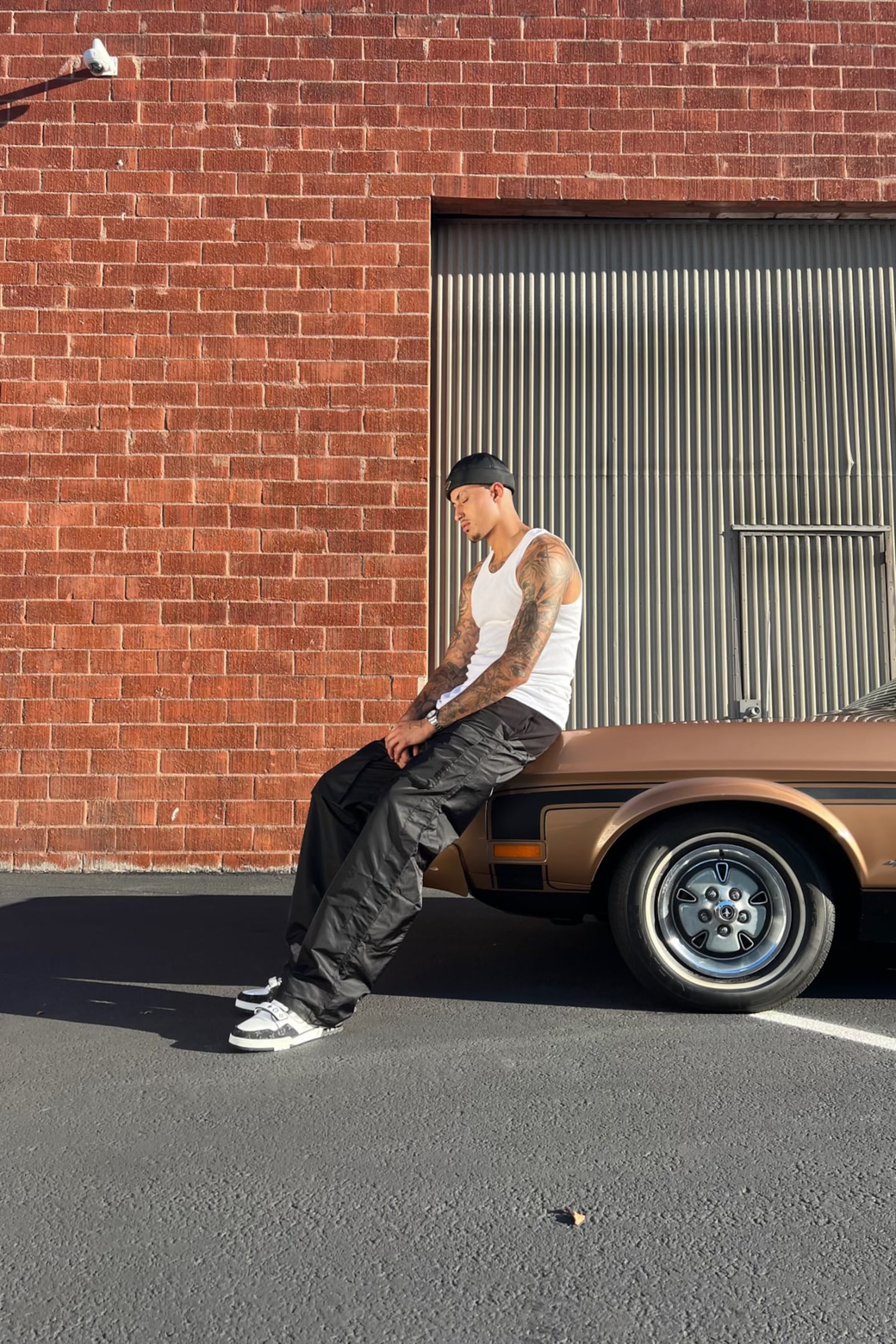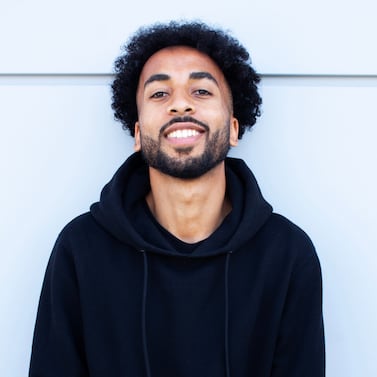
The Business of Fashion
Agenda-setting intelligence, analysis and advice for the global fashion community.

Agenda-setting intelligence, analysis and advice for the global fashion community.

When Toronto-based designer Spencer Badu was accepted into a well-known showroom in Paris, he was sure it would be his ticket to fame — or at least recognition from buyers and key editors during fashion week.
But Badu soon realised the showroom’s sales agents were too busy steering buyers to the higher-profile brands on display than to his own. So he took matters into his own hands the next year, renting an Airbnb and a couple of clothing rails before reaching out to buyers directly, inviting them to check out his genderless ready-to-wear line, which today includes cargo pants, track jackets and other staples.
His DIY approach, during the Autumn/Winter 2018 season, yielded instant results. Ssense — the Canadian retailer known for often being first to stock buzzy emerging labels — placed one of the brand’s first-ever wholesale orders. The designer’s sharpened pitch also appealed to niche retailers including Opener in South Korea, known for its curation of young luxury brands including Martine Rose and S.S. Daley, which also placed orders that season.
Badu found a way to catch the attention of buyers, editors and consumers without relocating his brand to a fashion capital like New York or Paris. That’s rarely easy: industry gatekeepers have less power than they used to, but they’re still more likely to give a leg up to brands they’ve already encountered. Few are making regular scouting trips outside the usual circuit of global fashion capitals. Without the prestige of “designed in Paris,” or “made in New York,” founders end up having to work harder to build credibility.
ADVERTISEMENT
“When you’re not coming from a city with a long history of famous designers and loads of well-known stores, you have to find a way to carve your own lane,” Badu said.
But the changing dynamics of the industry has created new opportunities. During the pandemic, brands were forced to embrace virtual appointments for buyers and VIP shoppers. For many, these Zoom meetings have persisted, levelling the playing field for small remote brands that may not have the means to travel for every potential order. Meanwhile, consumers’ growing comfort in shopping online meant lesser-known brands with eye-catching social media feeds were able to attract shoppers far beyond their immediate locales.
The activewear brand Castore started out from a tiny town in the UK called Bebington, near Liverpool and now manufactures apparel for elite teams across football, cricket, rugby and F1; Story mfg, a husband-and-wife run ready-to-wear brand is based in Brighton, UK but has attracted a high-profile clientele that includes Gigi Hadid, Hailey Bieber and Kyrie Irving. Meanwhile, Manchester-based sneaker brand Clints has seen its popularity soar after a high-profile collaboration with Dutch streetwear giant Patta, followed by the opening of its first flagship store in its hometown last summer.
These brands have been able to grow since the pandemic through a combination of gritty hustle, leveraging with local as well as international celebrity fans, and choosing strategic wholesale partners to garner credibility and exposure abroad.
“It’s about doing everything you can to grab the attention of key people in key markets, whether that’s by spending more time creating compelling social media content, or reaching out to press or buyers who may have a personal connection to the city you’re from,” said Harry Fisher, whose agency, Htown, has launched the wholesale businesses of brands such as Nensi Dojaka, Maximilian and Mowalola. Htown also works with Badu.
For indie brands, wholesale isn’t just a revenue stream; if done correctly, it’s a way to show up in front of tastemaking consumers, stylists and other professionals in the industry with just a few retail partners, Fisher said. The key is to select stockists that punch above their weight in terms of cultural cachet and reputation.
Badu said his tightly managed roster of seven wholesale partners has helped win over a discerning but influential consumer group, including K-pop sensation New Jeans, who came across his line while shopping at Opener, a boutique in South Korea, and DJ Peggy Gou, who found Badu’s brand in Htown, Fisher’s east-London boutique run alongside his agency.
“Now we’re in stores in Korea, China, the UK and US, certain people see us adjacent to these big brands and suddenly think of your clothing as valuable, therefore you’ve made it in their eyes and you’re a real fashion designer worth paying attention to,” he said.
ADVERTISEMENT
Each New Jeans’ appearance in his clothing — including a $120 American football-style jersey and several of the brand’s $135 “Youniform” T-shirts — has resulted in a flurry of new followers on Badu’s social media accounts.
At respected stores, brands also have a higher chance of exposure to celebrity stylists. Thanks to this, Badu’s clothing has found fans in high places, and in recent years has been spotted on the likes of American rapper Kendrick Lamar and NBA fashion icon Kyle Kuzma.
Some designers see their provincial origins as an advantage.
This is certainly true in the case of Bertony Da Silva, the designer behind the fast-growing Belgian streetwear label, Arte Antwerp, who was able to build a loyal base of local shoppers by marketing his brand’s sports-inspired streetwear offering to fans of the the city’s nascent hip-hop and youth culture scene.
While it’s well known for the “Antwerp Six” — the collective of luxury designers that included Dries Van Noten and Ann Demeulemeester, who graduated from the city’s Royal Academy of Fine Arts in the 1980s — Antwerp wasn’t a streetwear destination when Da Silva first started experimenting with T-shirt design projects in 2009.
Arte Antwerp’s collections of puffer jackets, hoodies and knitwear rapidly spread in popularity and quickly became a symbol of pride among young fashion-forward consumers in Belgium, as well as young kids from the African diaspora who previously weren’t able to turn to many local brands they felt represented their cultural interests (Da Silva is of Angolan heritage). Da Silva’s connections to local high-profile hip-hop artists and athletes also helped spread the brand’s cool factor and gave its sports-inspired streetwear credibility.
“Creating this crossover between Antwerp’s high-fashion traditions with Arte’s elevated streetwear and hip-hop and sporting connections was exactly what helped us stand out when we first started,” he told BoF.
Coming from a smaller town or city certainly has other advantages. Badu said being in Toronto means there isn’t a relentless schedule of industry events. Rents are also cheaper, which means brands can afford to open a store sooner than their big city counterparts, Fisher added.
ADVERTISEMENT
Opening hometown flagship stores allows emerging designers to emphasise their regional identity, creating not only a retail destination but also a gathering point for local fashion fans. Meanwhile, there are often far fewer “cool” brands than in major cities, meaning when one does enter the scene, it can quickly become a mecca for fashion-forward consumers.
Clints, the Manchester, UK-based label known for its thick-soled retro sneakers, was able to turn its sleek, minimalist store into a regular hangout for the local streetwear community, according to founder Junior Clint. As the only store of its kind in Manchester, Clints has also become a destination for fashion-forward visitors to the city.
Arte’s two flagship stores in Antwerp and Brussels, which opened in 2016 and 2021 respectively, also have become hotspots for the streetwear and music communities for events, such as shows or exhibitions. It’s also where young consumers and fans may go to spot high-profile friends and collaborators of the brand, including footballers such as Belgium’s Michy Batshuayi and Rafael Leão of Portugal.
“It’s so important not to forget about catering to your local community,” Da Silva said. “These are the people who will automatically spread the word about your brand worldwide.”
Emerging labels can catch the eyes of inundated buyers through savvy pitching, leveraging relationships with celebrity fans and compelling social-media profiles.

Daniel-Yaw Miller is Senior Editorial Associate at The Business of Fashion. He is based in London and covers menswear, streetwear and sport.
As the German sportswear giant taps surging demand for its Samba and Gazelle sneakers, it’s also taking steps to spread its bets ahead of peak interest.
A profitable, multi-trillion dollar fashion industry populated with brands that generate minimal economic and environmental waste is within our reach, argues Lawrence Lenihan.
RFID technology has made self-checkout far more efficient than traditional scanning kiosks at retailers like Zara and Uniqlo, but the industry at large hesitates to fully embrace the innovation over concerns of theft and customer engagement.
The company has continued to struggle with growing “at scale” and issued a warning in February that revenue may not start increasing again until the fourth quarter.